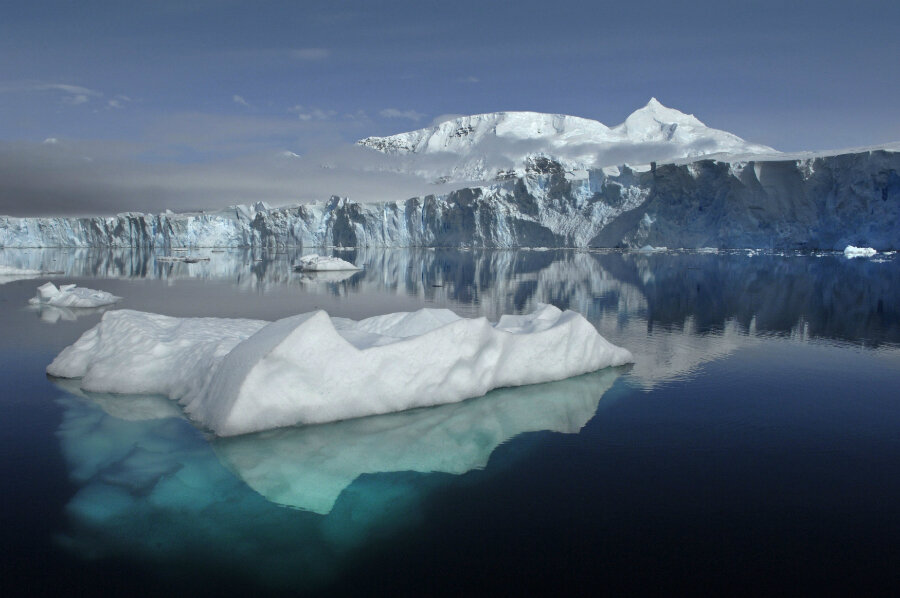More evidence of global melt: Antarctic sea ice hits record low
Loading...
Sea ice around Antarctica has contracted to the smallest annual extent in the 38 years on record, the latest satellite data shows.
Antarctic sea ice has long contrasted glacial melting rates that serve as evidence of climate change, expanding to record highs between 2012 and 2014 and giving voice to climate change skeptics. But the daily data from the US National Snow and Ice Data Center (NSIDC) shows that the sea ice extent on Monday shrunk to 883,015 square miles, continuing the declining trend that began in November.
“We’ve always thought of the Antarctic as the sleeping elephant starting to stir,” NSIDC director Mark Serreze told Reuters. “Well, maybe it’s starting to stir now.”
Melting of the sea ice at this time of the year – the southern hemisphere's summer – is not uncommon. The ice usually reduces to its smallest size toward the end of February. The previous low, for instance, occurred on Feb. 27, 1997, with 884,173 square miles of sea ice. Voicing caution about drawing the final conclusion, scientists have suggested waiting to confirm the decline for a few days until more measurements are taken.
“But unless something funny happens, we’re looking at a record minimum in Antarctica. Some people say it’s already happened,” Dr. Serreze said. “We tend to be conservative by looking at five-day running averages.”
According to a statement from NSIDC, the melting occurred in the Amundsen Sea, which is nearly free of ice. NSIDC said this pattern of melting is also consistent with the ongoing “above average air temperatures off western Antarctica.”
The report, which also found a historic low for sea ice in the Arctic, falls in line with the data collected in November as sea ice levels in both the Arctic and the Antarctic hit record lows. At that time, however, scientists were hesitant to say the recent southern ice loss was a definitive reversal of its previous trend, considering the natural atmospheric fluctuation in the region.
Still, the overall loss of sea ice since 1979 has concerned scientists, who have for years warned against the danger of a declining level of sea ice, which plays a vital role in regulating the Earth's temperature. Sea ice acts as “an air conditioner” for the planet, as it absorbs the tropical heat and reflects energy from the sun back into space, The Christian Science Monitor previously reported.
Sea ice melting does not directly contribute to sea level rise because it is already floating on the ocean. It does, however, warm the oceans, which causes the ice shelves and land ice (including glaciers) to melt, and in turn does contribute to sea level rise.
A historic increase in the Antarctic sea ice has undermined arguments that manmade global warming is responsible for causing such a phenomenon. But through a small minority of climate change models, some scientists have pinpointed the reason behind the growing trend. They said the explanation lies not in the Southern Ocean itself, but is caused by “a prolonged fluctuation in atmospheric pressure that affects sea temperatures” in the Pacific Ocean, the Monitor reported in July.








